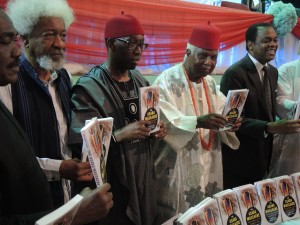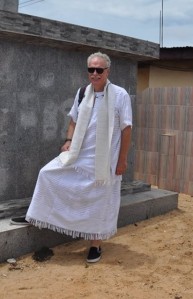
The people of Asaba and environs have concluded plans to celebrate a major event in the history of the town, and Nigeria which occurred 50 years ago. They are organized under the Asaba October 7 Memorial Group.
According to the group’s chairman, Mr Alban Ofili-Okonkwo in a statement, October 2017 “marks the 50th anniversary of the killings of unarmed and defenceless indigenes in Asaba, one of the ugliest episodes of the Nigerian civil war, which attracted international condemnation of the Nigerian authorities. The victims were Nigerian citizens who had trooped out to welcome Nigerian soldiers that had reclaimed the vital town of Asaba in Midwestern Nigeria from Biafran troops in October 1967.”
Ofili-Okonkwo added that the programme would span four days with the theme “Remembrance & Forgiveness,” adding that all the activities designed to commemorate this year’s landmark anniversary would revolve around the theme. He stated that the group will embark on sensitisation and citizen engagement programmes in order to achieve healing and closure which will “signal the collective resolve of Asaba indigenes to leave behind the memories of their tragic past and walk resolutely into a more promising future.
Commemorative activities begin October 5 with a one-minute silence for the Asaba martyrs at noon, followed by a media briefing, canon shots heralding traditional burial rites for the dead (known in Asaba culture as egwu ota). Also planned are service of songs and candle light procession to Ogbeosawa grave site for tributes to the dead, interdenominational service, exhibition of artefacts, documentary and presentation of awards to honourees.
A major highlight of the anniversary, he further disclosed, would be the presentation of a book on the carnage entitled “The Asaba Massacre — Trauma, Memories, and the Nigerian Civil War” authored by renowned Anthropologist Prof. S. Elizabeth Bird and co-authored by distinguished historian Prof. Fraser M. Ottanelli both of the University of South Florida.
The book presentation will, however, be preceded by a colloquium on the Asaba Massacre, with the theme: “In Pursuit of Rebirth”. Eminent scholars, statesmen, renowned industrialists and other distinguished citizens of the world are expected to attend the activities marking this year’s anniversary.
The activities will be rounded off on Sunday, October 8 with thanksgiving service in churches all over the world.




 For anyone in the London area, we will be giving a talk and presenting our new book, “The Asaba Massacre: Trauma, Memory and the Nigerian Civil War,” on Thurs., Oct. 12, at 7 p.m. at the School of Oriental and African Studies (SOAS), University of London. We will have copies of the book available at a significant discount. For information about the event, please see:
For anyone in the London area, we will be giving a talk and presenting our new book, “The Asaba Massacre: Trauma, Memory and the Nigerian Civil War,” on Thurs., Oct. 12, at 7 p.m. at the School of Oriental and African Studies (SOAS), University of London. We will have copies of the book available at a significant discount. For information about the event, please see: 6 p.m.. Location: Quintessence Bookstore and Gallery, Plot 13, Block 44 Parkview Estate, off Geerard Road, Ikoyi, Lagos.
6 p.m.. Location: Quintessence Bookstore and Gallery, Plot 13, Block 44 Parkview Estate, off Geerard Road, Ikoyi, Lagos. From Liz Bird:
From Liz Bird: Although we have not been very active on our blog for a while, that doesn’t mean we haven’t been working! In fact, we’re excited to announce that our book is about to be published. The book, The Asaba Massacre: Trauma, Memory, and the Nigerian Civil War, will be published by Cambridge University Press on Aug. 31, 2017, just a few weeks before the 50th anniversary of the massacre at Oge-Osowa, Asaba.
Although we have not been very active on our blog for a while, that doesn’t mean we haven’t been working! In fact, we’re excited to announce that our book is about to be published. The book, The Asaba Massacre: Trauma, Memory, and the Nigerian Civil War, will be published by Cambridge University Press on Aug. 31, 2017, just a few weeks before the 50th anniversary of the massacre at Oge-Osowa, Asaba.











